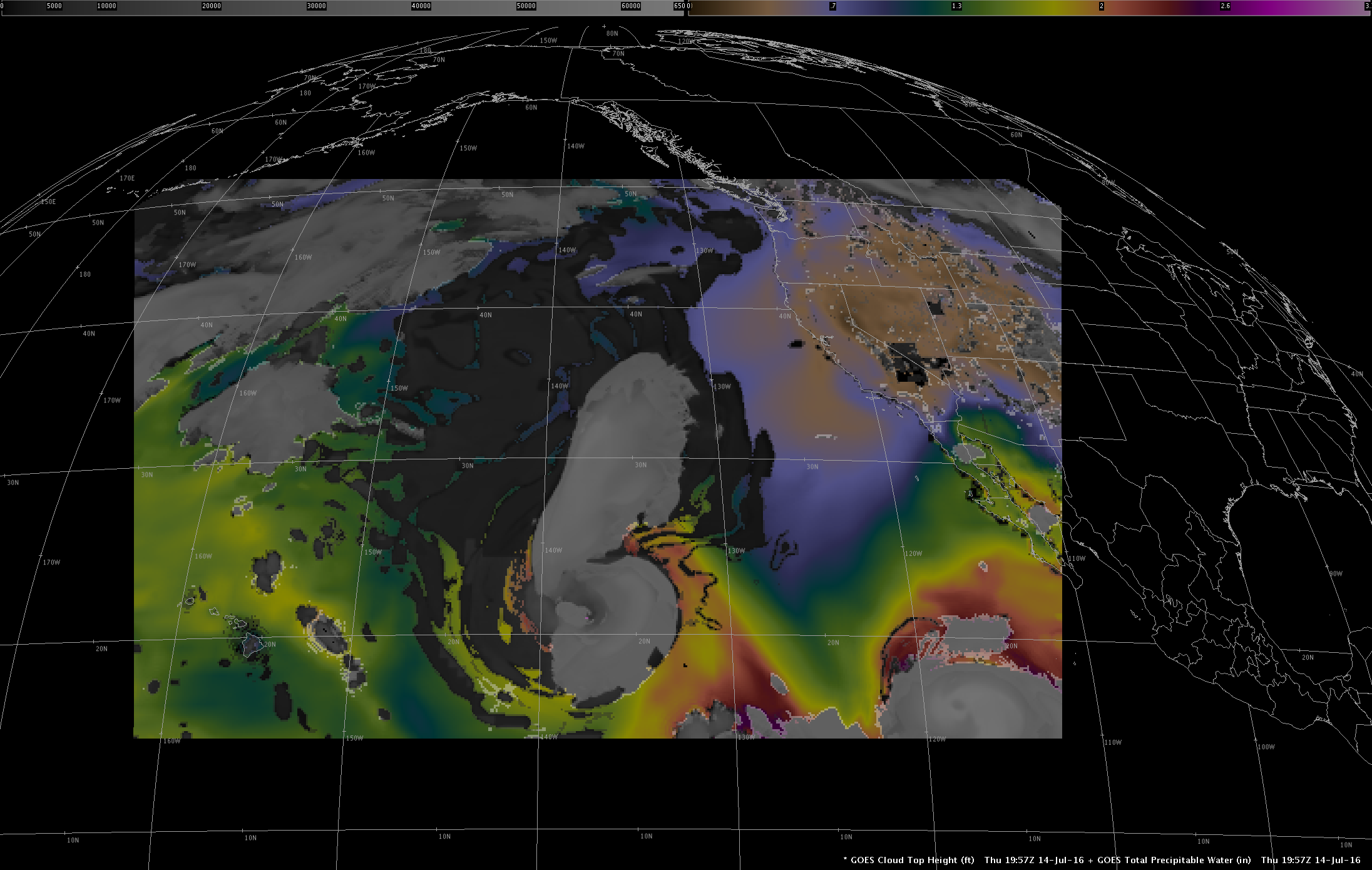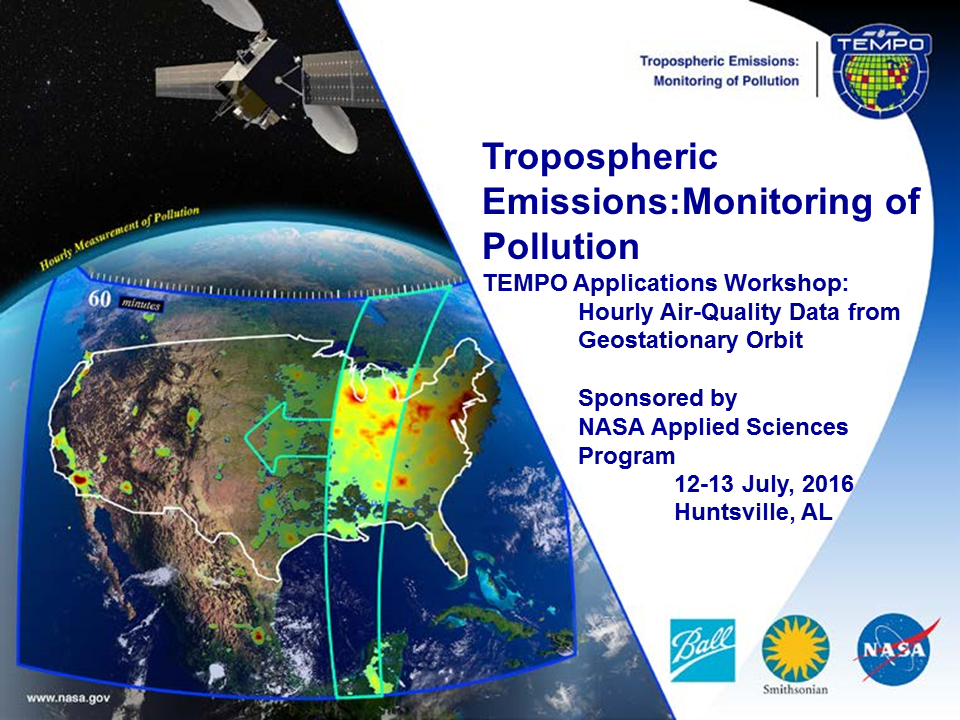 |
CIMSS-NOAA Weekly Report
[ Archive ] |
 |
CIMSS AND ASPB WEEKLY HIGHLIGHTS FOR THE WEEK ENDING JULY 15, 2016
IN THE PRESS:
ITEMS FOR THE ADMINISTRATOR:
ITEMS FOR THE ASSISTANT ADMINISTRATOR:
ITEMS FOR THE OFFICE DIRECTOR, STAR:
Participation in SPRWG: Steve Ackerman and Chris Velden participated in a two-day meeting of the NESDIS commissioned Space Platforms Requirements Working Group (SPRWG). As NOAA plans for the future operational environmental satellite system that will follow GOES and JPSS, beginning about 2030, it convened the SPRWG and charged the group to assess new or existing satellite requirements against the baseline architecture, and to provide relative priorities for observational requirements in the context of the future architecture. The SPRWG will confirm and/or provide inputs for new foundational (Level 0 and Level 1) requirements for the next generation of NOAA satellites post the GOES-R, JPSS, DSCOVR, and COSMIC-2 missions, with the goal of achieving a more flexible, responsive and sustainable architecture. (S. Ackerman, CIMSS, 608-263-3647)
Real-time Simulated ABI Level 2 Products Now in AWIPS via NOAAPORT: Real-time simulated GOES-R Advanced Baseline Imager (ABI) products are now flowing to the Advanced Weather Interactive Processing System (AWIPS) routinely over the NOAAPORT Satellite Broadcast Network (SBN) on the new experimental feed as part of end-to-end testing for GOES-R ABI data delivery. The real time ABI radiances are generated by Cooperative Institute for Meteorological Satellite Studies (CIMSS) and select Level 2 products are generated by the GOES-R Ground System and then sent over NOAAPORT for National Weather Service (NWS) user preparedness. (T. Schmit, tim.j.schmit@noaa.gov, E/RA2, 608 263-0291; R.B. Pierce, E/RA2, 608-890-1892, brad.pierce@noaa.gov)
 (Click image to enlarge)
(Click image to enlarge)
Figure caption: Combined image for Total Precipitable Water and Cloud Top Height at 19:57Z on July 14, 2016 from the GOES-West position
ITEMS FOR THE DIVISION CHIEF, CoRP:
1st Tropospheric Emissions: Monitoring of Pollution (TEMPO) Applications Workshop: Brad Pierce attended the 1st Tropospheric Emissions: Monitoring of Pollution (TEMPO) Applications Workshop in Huntsville, AL where he served on the steering committee and chaired the Air Quality Forecasting Applications Session. This workshop focused on TEMPO (http://tempo.si.edu/) products, and engaging user communities to prepare to enable science across areas of health and air quality planning and assessment, disaster response, emissions, exposure, and ecological impacts. The workshop included representatives from NASA, NOAA, Environment and Climate Change Canada (ECCC), the US Environmental Protection Agency (EPA) as well as state and local air quality management (R.B. Pierce, E/RA2, 608-890-1892, brad.pierce@noaa.gov)
 (Click image to enlarge)
(Click image to enlarge)
Figure caption: TEMPO Applications Workshop agenda and presentations are available at (http://nsstc.uah.edu/tempo/agenda.html).
PATMOS-x data used in Nature Article: An article (doi:10.1038/nature18273) in the journal Nature used data from Pathfinder Atmospheres Extended (PATMOS-x) satellite climate data set to study changes in cloudiness over the last 30 years. The study was led by Joel Norris of the Scripps Institution of Oceanography. The study was able to show that patterns in the satellite record matched those predicted by climate models. PATMOS-x was developed in collaboration with NOAA/NESDIS and the Cooperative Institute of Meteorological Satellite Studies (CIMSS). PATMOS-x data is hosted by the NOAA/NESDIS National Center for Environmental Information (NCEI).(A. Heidinger, E/RA2, 608-263-6757, andrew.heidinger@noaa.gov)
National Academies Presentation: A new National Research Council committee on Enhancing the Resilience of the Nation's Electric Power Transmission and Distribution System requested a presentation on extreme weather events through NOAA/NCEI's Center for Weather and Climate. The presenters were Tom Karl (NCEI), Jim Kossin (NCEI), Mike Squires (NCEI), and Ken Kunkel (NOAA Cooperative Institute for Climate and Satellites). The presentations were given during a public session through the Board on Energy and Environmental Systems, National Academies of Sciences, Engineering, and Medicine in Washington DC. (J. Kossin, NCEI/CWC, 608-265-5356)
VISITORS:
NEXT WEEK:
LOOKING AHEAD:




 (Click image to enlarge)
(Click image to enlarge) (Click image to enlarge)
(Click image to enlarge)